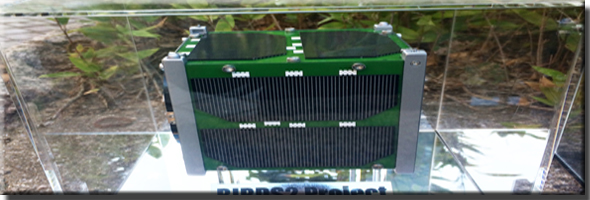
The country now has its first CubeSatellite, Maya 1.
It was unveiled recently y by the Department of Science and Technology (DOST) in cooperation with Japan’s Kyushu Institute of Technology (Kyutech) and the Japan Aerospace Exploration Agency (JAXA).
Maya 1 is scheduled to be handed over to JAXA on April 1 at the Tsukuba Space Center. Japanese space scientists will then conduct final tests on the CubeSat’s space-worthiness before it is shipped to the International Space Station in June.
From the Japanese Experiment Module, Japan’s laboratory facility at the space station, it will be released in July into Low Earth orbit or an altitude of 2,000 kilometers or less.
Maya 1, which weighs 1 kilogram, is different from the Diwata 1 and 2 satellites each weighing about 50 kg. Diwata 1 has been in Low Earth orbit for two years now and has generated more than 15,000 images, including that of the ongoing Mayon Volcano eruption.
Diwata 2’s deployment is expected in late 2018.
The Maya 1 CubeSat is a miniaturized satellite for space research about the size of a small balikbayan box. About a kilogram in weight, it is made from off-the-shelf components that can be bought in commercial electronic shops.
Named after the Philippine sparrow, Maya 1 is part of the Joint Global Multi-Nation BIRDS Satellite Project, a cross-border university project led by Kyutech.
Maya 1’s missions is to collect data and capture images, programmed to target soil monitoring for agricultural applications. Data such as temperature and humidity from sensors can be forwarded from the remote stations to the Mission Control Center in Kyutech where the downloaded data are transferred to a central server for future processing and distribution to users, including researchers in the Philippines.
The CubeSat will send beacons at15-second intervals during the first few months of operation. Because they are in the amateur band, ground stations all over the world could track the satellite as it passes overhead.
The development of CubeSats in the Philippines can be a viable option for schools and universities as an educational platform because of relatively lower development cost.




